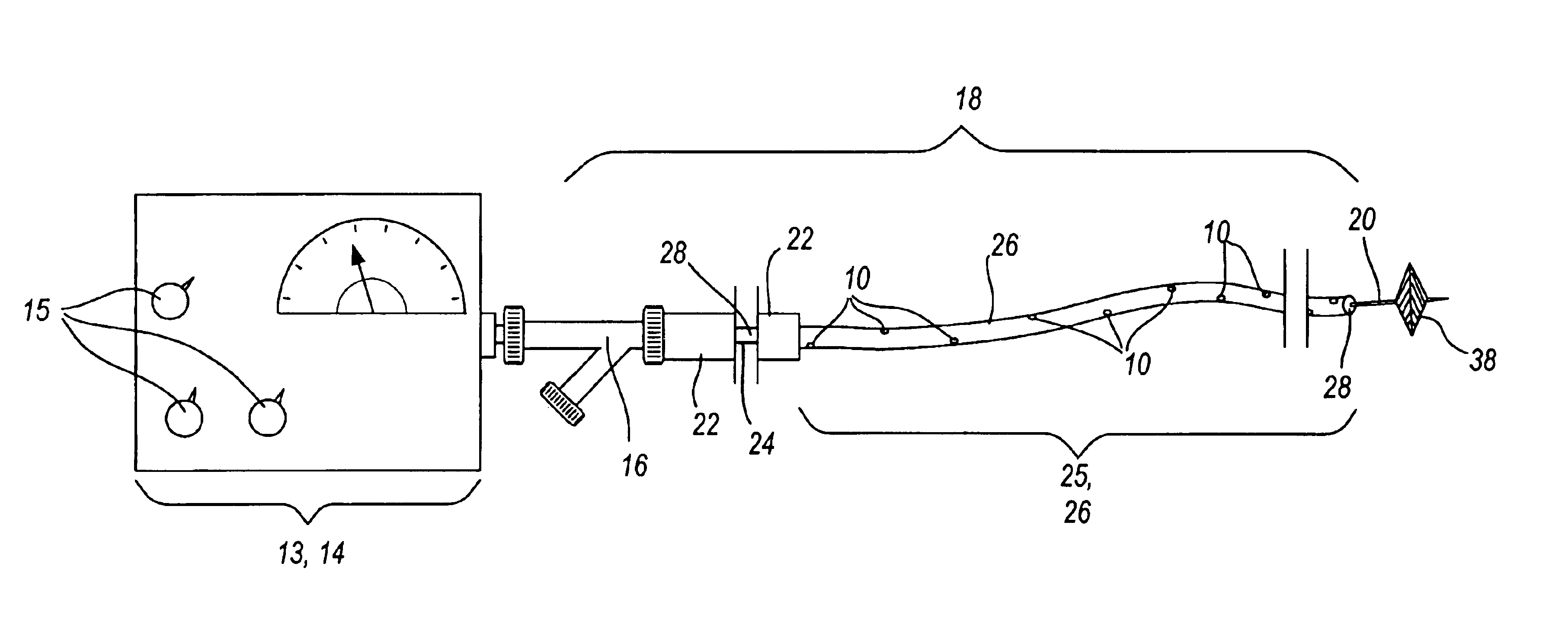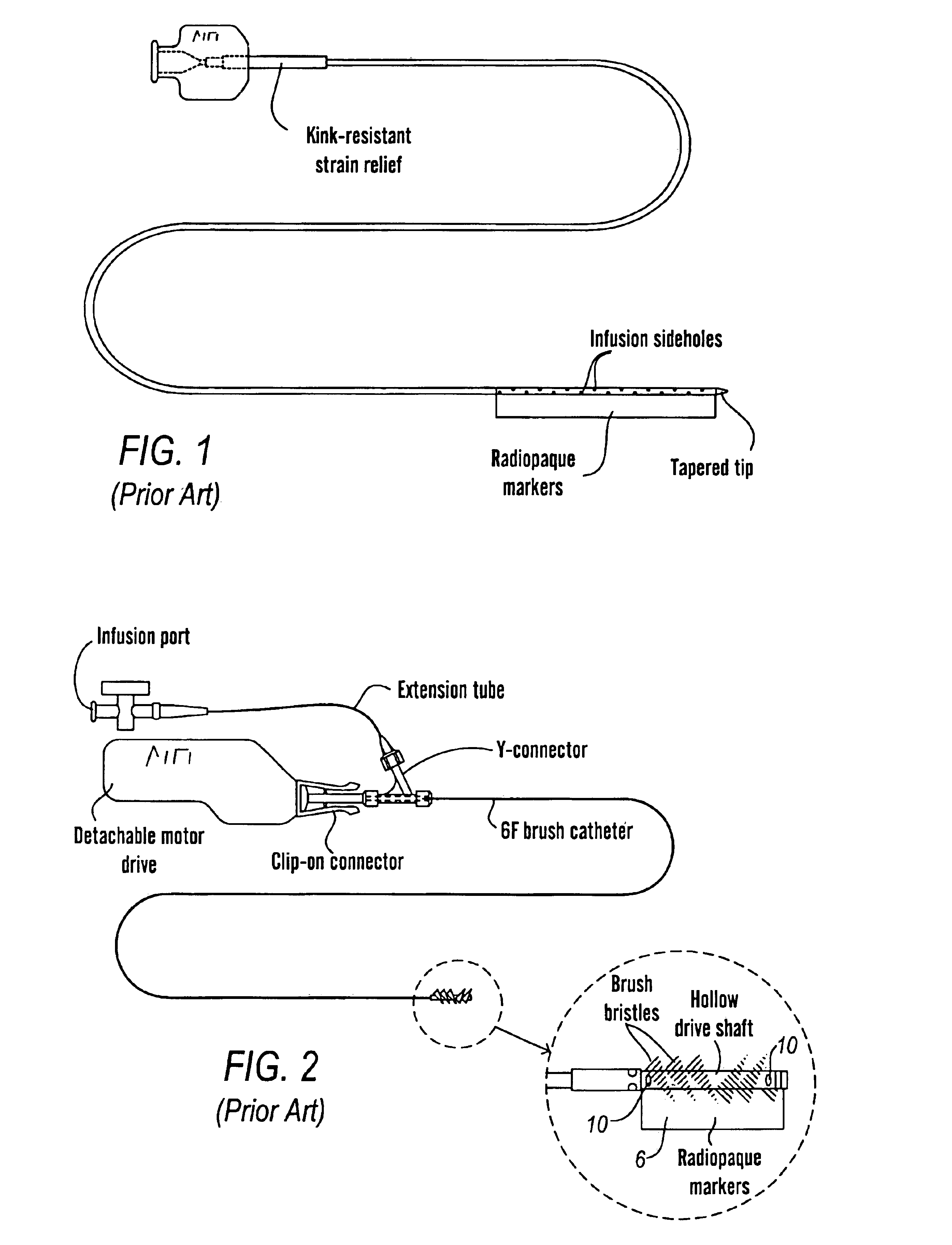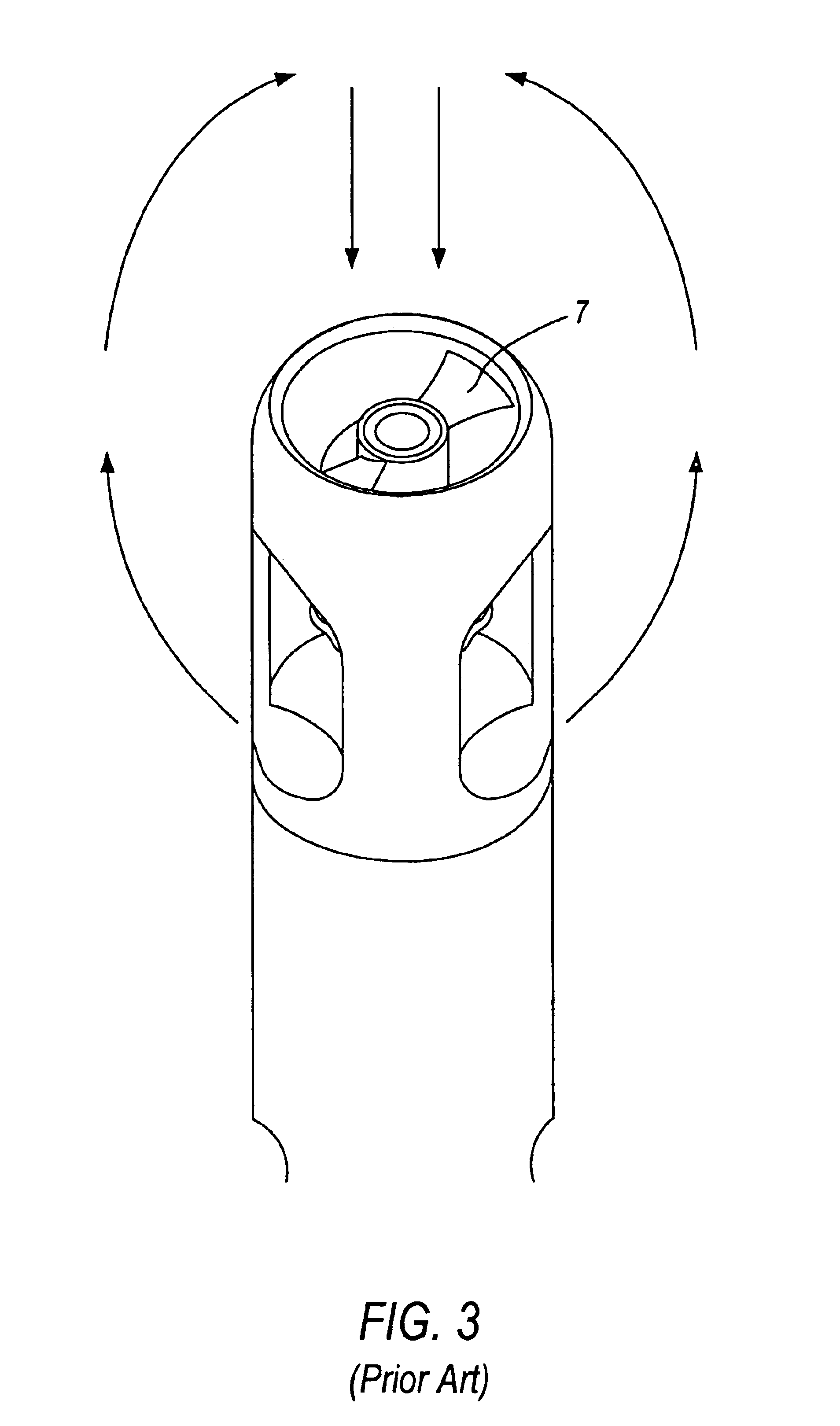The presence of thrombus, or blood clot, within arteries, veins, grafts, and vascular channels of the bodies is a challenge to many disciplines of
medicine.
Even if the thrombus develops gradually, conservative medical management with drugs is frequently less than satisfactory.
Surgical intervention is an alternative, although a costly, and, at times, an ineffective one in many cases.
Mechanical thrombolytic devices have been developed which are quick and effective in
dialysis grafts, mainly because of the nature of such fresh unorganized clots presented in such situations, but such devices are not effective in removing most of the thrombus in arteries and veins of the body.
The
endothelium is a fragile covering of the inside of arteries and vessels, and is easily damaged with mechanical forces.
This may cause a
cascade of events resulting in
thrombosis,
restenosis, accelerated atherosclerosis, valvular dysfunction,
platelet aggregation, late thrombus formation, and other untoward events.
Many mechanical thrombolytic devices have been developed to hasten the process of non-surgically eliminating clot from blood vessels, but in most cases, they fail to remove all of the clot.
Such methods and devices do provide mechanical action over a protracted period of time while the
drug is being infused.
As a result, there is invariably thrombus remaining at the termination of the procedure, necessitating the infusion of a
thrombolytic drug through a different
catheter for a protracted period of time to eliminate the remaining clot.
This proves costly as more resources in the form of personnel and the expensive drugs are consumed.
The mechanical action is often effective in debulking, or lessening, the clot burden, but rarely effective in removing or dissolving all of the clot.
The prior art devices are also expensive, typically costing $500-700 or more.
This tremendous expenditure of time, effort, and supplies is usually not rewarded with complete success, creating a need to place another expensive
infusion catheter within the clot, transferring the patient to an intensive observation area, and infusing
thrombolytic drug(s) for a protracted period.
The net consequence is that a lot of time, energy, personnel, and money are expended with the use of prior art mechanical and pharmaco-
mechanical devices, with incomplete results, necessitating the use of a relatively long infusion to effect complete thrombolysis.
Therefore, the use of the prior art devices to dissolve a clot during the course of a procedural intervention is unsatisfactory, and an unnecessary consumption of resources.
Moreover, the design and speeds at which such devices operate risk significant injury to a patient.
The existing mechanical and pharmacomechanical devices also suffer from a design that limits the thrombolytic action to an area near the tip of the
catheter.
There is a real potential for many of them to damage the endothelium, or lining of the blood vessels, if used for more than a few seconds at a time.
Such prior art devices must be advanced and retracted within the lumen of the occluded vessel to “treat” one segment of the vessel at a time, usually resulting in incomplete and ineffective treatment of the entire occluded segment, thus requiring the need for the patient to undergo a prolonged infusion of the
thrombolytic drug with the attendant increase in costs.
There are many prior art devices for the treatment of thrombus or blood clot within the arteries and veins of the body, as the occurrence of blood clots is a common and serious medical condition.
Such methods necessitate the use of a large amount of expensive drug or lytic agent and overnight monitoring in a
critical care unit.
While they may be effective in removing a large amount of the thrombus in a relatively short period of time, there is usually incomplete thrombus removal necessitating further infusion of lytic agents to dissolve the residual thrombus.
They however, are time inefficient and the action of the lytic agent usually takes hours to achieve complete thrombolysis.
All of the prior art combination devices are used within the confines of a procedural intervention that takes less than an hour and would damage the endothelium if used for more protracted periods of time.
Many would overheat or fail, as the mechanical motion demands
high frequency vibrations or rotation.
Even Dubrul, U.S. Pat. No. 5,731,3848 at the lowest frequency of one vibration / second, would damage the endothelium if activated for several hours.
There is a dichotomy in the design of all of these prior art thrombolytic catheters.
The pure infusion catheters only passively bathe the clot and have no method of increasing the surface area of the clot to be dissolved.
The purely
mechanical devices diminish clot burden, at a cost of time, materials, and personnel, but frequently leave significant residual clot requiring a prolonged infusion.
The combination pharmaco-mechanical devices attempt to fragment the clot and deliver the lytic agent simultaneously, but are only able to be mechanically active for short periods of time, usually not enough time for the lytic agent to dissolve the clot.
 Login to View More
Login to View More  Login to View More
Login to View More 


